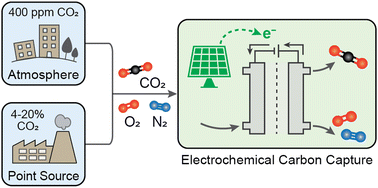Electrochemical carbon capture processes for mitigation of CO2 emissions
Abstract
Carbon capture and storage (CCS) is essential if global warming mitigation scenarios are to be met. However, today's maturing thermochemical capture technologies have exceedingly high energy requirements and rigid form factors that restrict their versatility and limit scale. Using renewable electricity, rather than heat, as the energy input to drive CO2 separations provides a compelling alternative to surpass these limitations. Although electrochemical technologies have been extensively developed for energy storage and CO2 utilization processes, the potential for more expansive intersection of electrochemistry with CCS is only recently receiving growing attention, with multiple scientific proofs-of-concept and a burgeoning pipeline with numerous concepts at various stages of technology readiness. Here, we describe the emerging science and research progress underlying electrochemical CCS processes and assess their current maturity and trajectory. We also highlight emerging ideas that are ripe for continued research and development, which will allow the impact of electrochemical CCS to be properly assessed in coming years.



 Please wait while we load your content...
Please wait while we load your content...